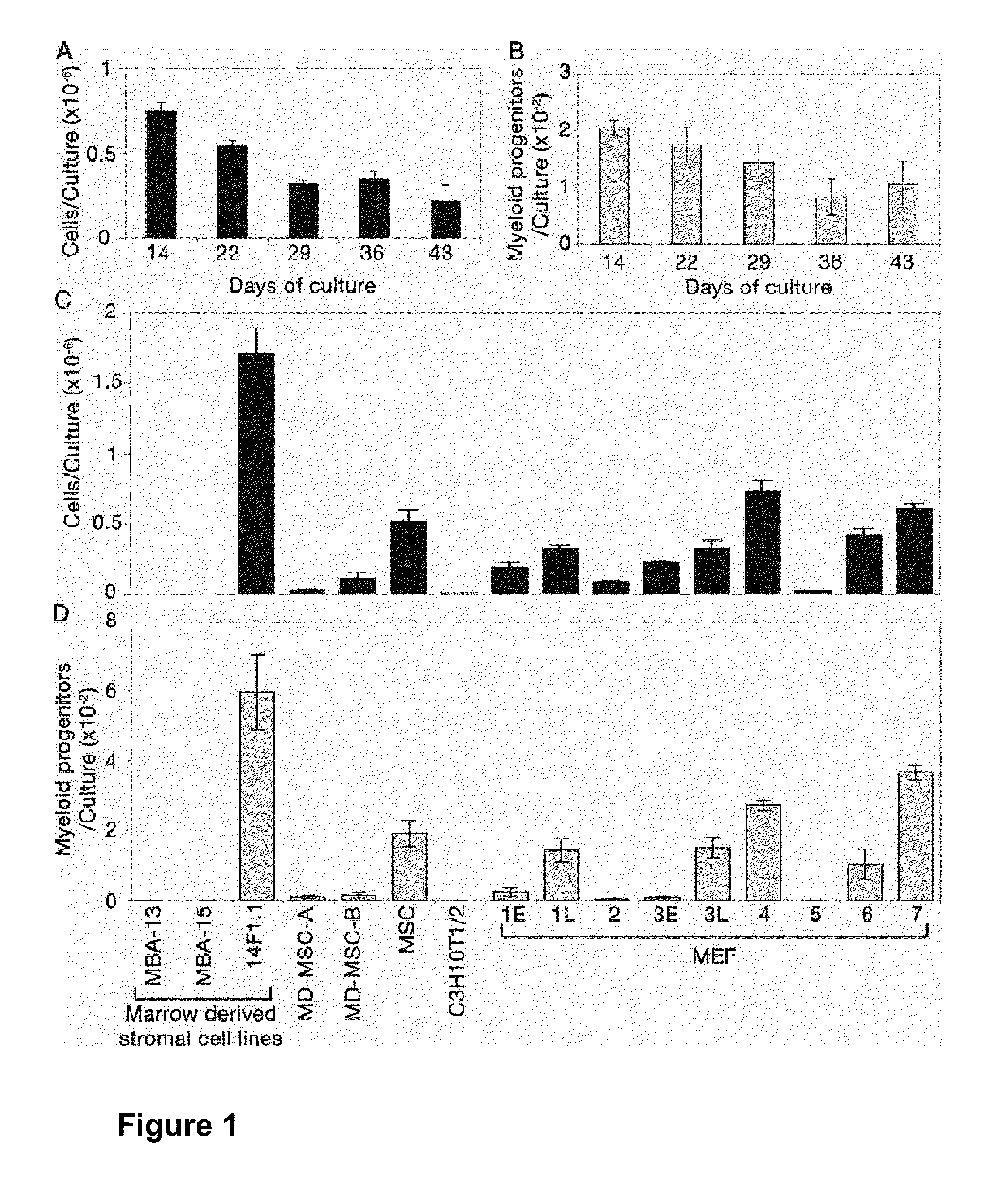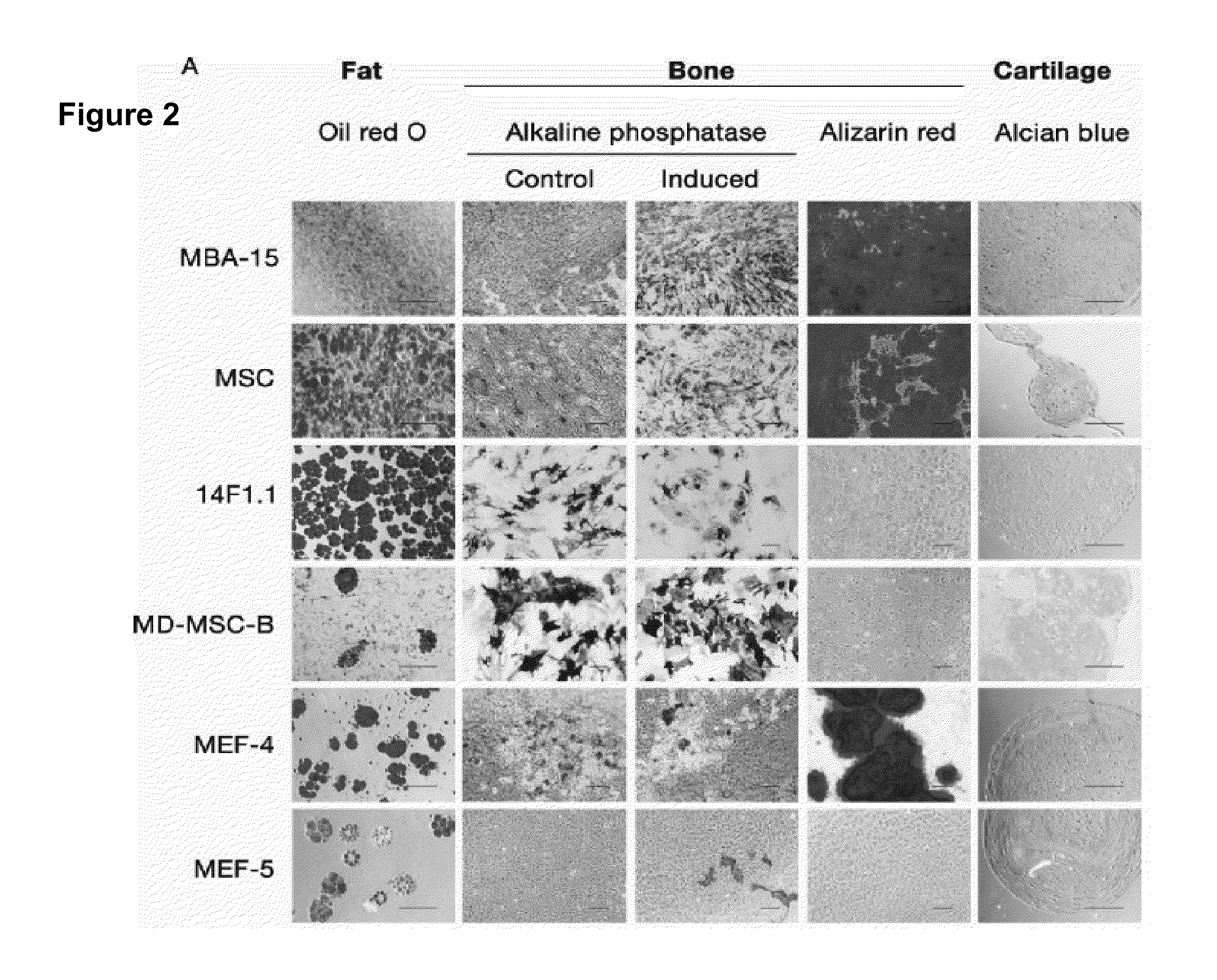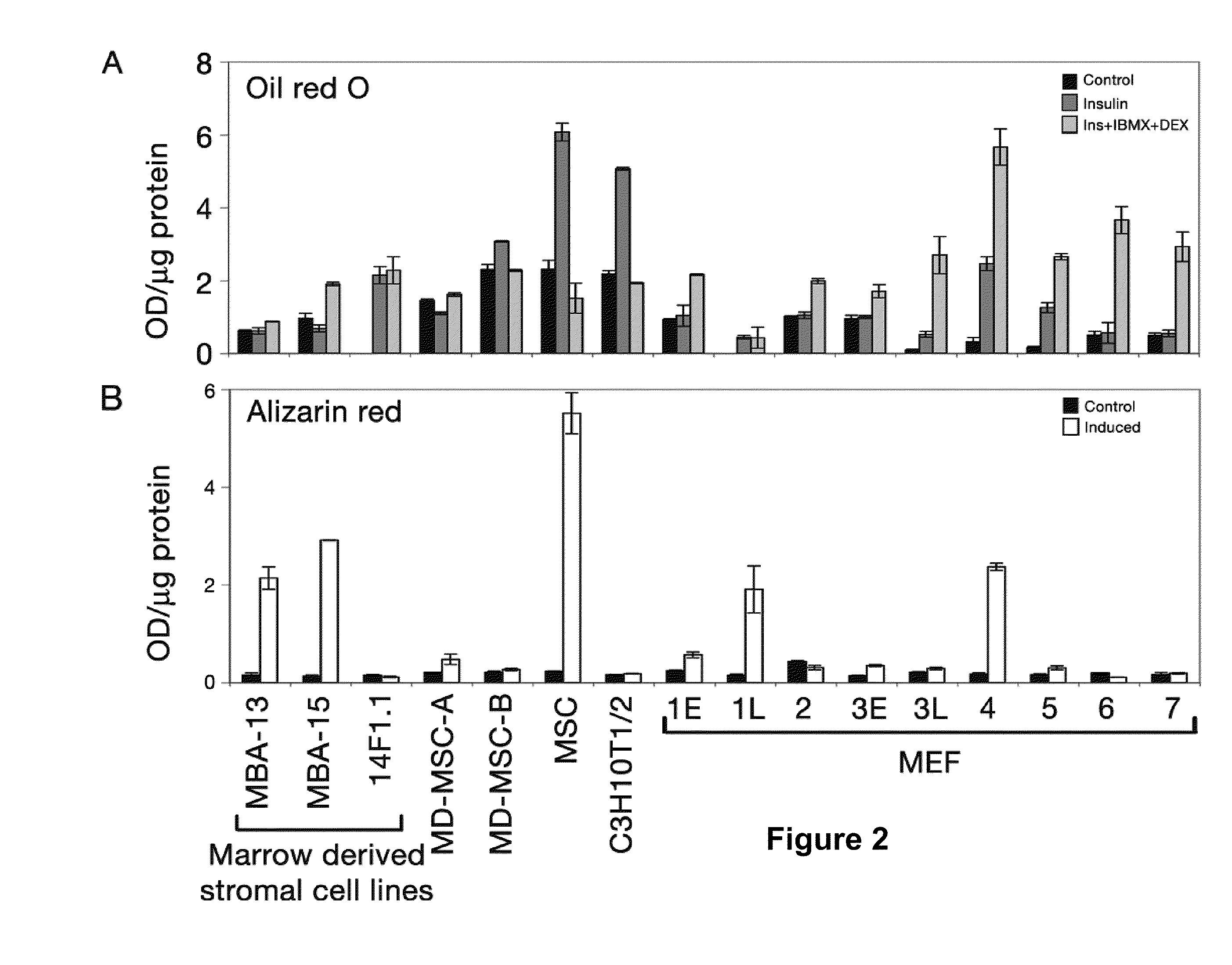Method and assay for glycosylation pattern detection related to cell state of stem cells
a stem cell and glycosylation pattern technology, applied in the field of stem cell cell glycosylation pattern detection methods and assays, can solve the problems of affecting the analysis of polysaccharides, affecting the function and interaction of proteins, and researchers cannot determine the true, correct glycosylation pattern of cell populations
- Summary
- Abstract
- Description
- Claims
- Application Information
AI Technical Summary
Benefits of technology
Problems solved by technology
Method used
Image
Examples
example 1
[0095]Characterizing Stem Cell Populations
[0096]This Example relates to the characterization of cell populations through determining glycosylation patterns or fingerprints, herein for the comparison of differentiated cells to their undifferentiated progenitor stem cells. The methods described herein may optionally be used to compare any cell populations, including cells before and after exposure to certain treatments and so forth, but are preferentially described herein with regard to stem cells for the purpose of description only and without any intention of being limiting in any way.
[0097]The cells used in this Example were mouse embryonic stem cells (MES), which can be differentiated to neural cells as described below. The glycosylation pattern or “glycoprofile” of differentiated neural cells was compared to that of MES cells, which are not differentiated. This comparison demonstrated that the myelopoietic supportive capacity of mesenchymal stromal cells is not coupled to multipo...
example 2
Method for Glycoanalysis
[0130]According to some embodiments of the present invention, the results of one or more assays with saccharide binding agents are examined according to a method for glycoanalysis, which is optionally and preferably provided in the form of software (although it may alternatively may be provided as firmware or hardware), described herein as a “comparative interpretation module”. The comparative interpretation module is aimed at inferring changes in glycosylation between two samples based on significant lectin differences.
[0131]The module preferably comprises two sub-modules: a comparison module and an interpretation module. The comparison module normalizes the fingerprints and extracts the differences between them; the comparison module analyzes the list of differences in saccharide binding agent signals and deconvolutes them to provide differences in glycan epitopes. For the purpose of description only and without wishing to be limited, the method is describe...
example 3
Clinical Applications of Determining the Glycosylation Pattern of Stem Cells
[0143]This Example relates to uses of the present invention for determining the glycosylation pattern of stem cells, particularly with regard to clinical applications. Human stem cells have been proposed for use (and / or are already in use) as transplants to patients who are in need of treatment for various diseases and injuries, including but not limited to Parkinson's disease, heart disease, blood cancers (such as leukemia), non-cancerous blood diseases (such as aplastic anemia), spinal cord injuries, brain damage and the like. It is important to monitor the state of such stem cells in vitro to make certain that the correct state is maintained before transplantation, whether to make certain that the stem cells remain undifferentiated and / or to make certain that the stem cells differentiate correctly to the desired differentiated cell type. Other uses include determining that the stem cells are differentiati...
PUM
| Property | Measurement | Unit |
|---|---|---|
| pH | aaaaa | aaaaa |
| fluorescent | aaaaa | aaaaa |
| structure | aaaaa | aaaaa |
Abstract
Description
Claims
Application Information
 Login to View More
Login to View More - R&D
- Intellectual Property
- Life Sciences
- Materials
- Tech Scout
- Unparalleled Data Quality
- Higher Quality Content
- 60% Fewer Hallucinations
Browse by: Latest US Patents, China's latest patents, Technical Efficacy Thesaurus, Application Domain, Technology Topic, Popular Technical Reports.
© 2025 PatSnap. All rights reserved.Legal|Privacy policy|Modern Slavery Act Transparency Statement|Sitemap|About US| Contact US: help@patsnap.com



